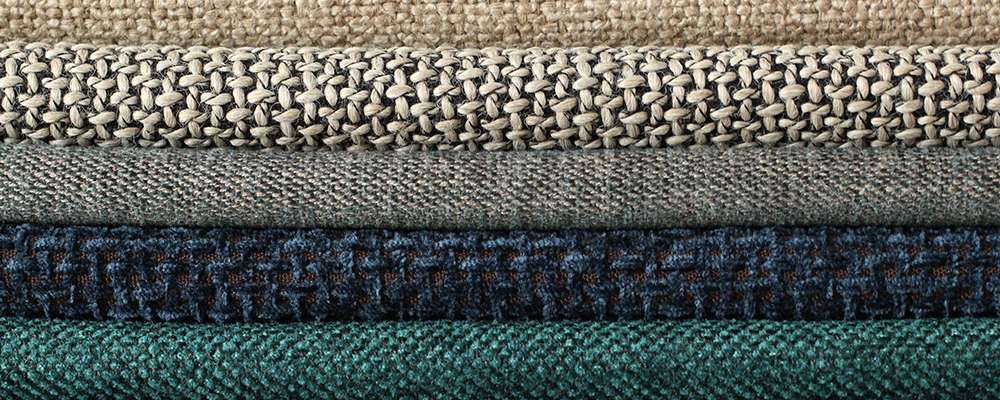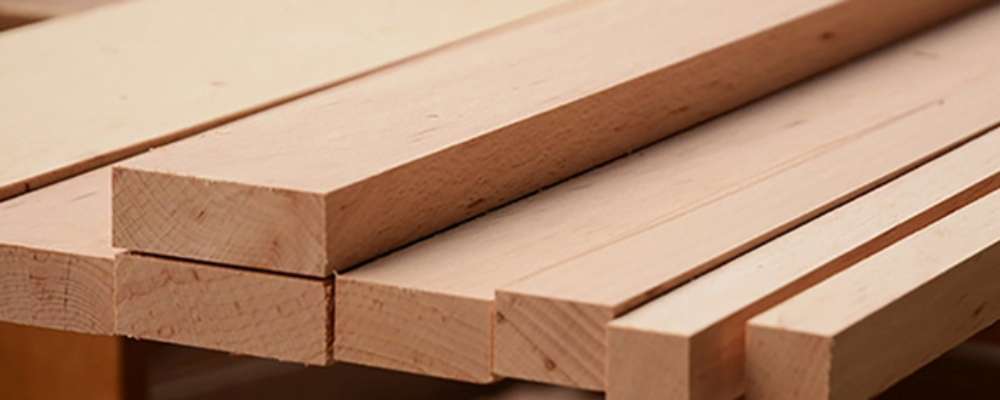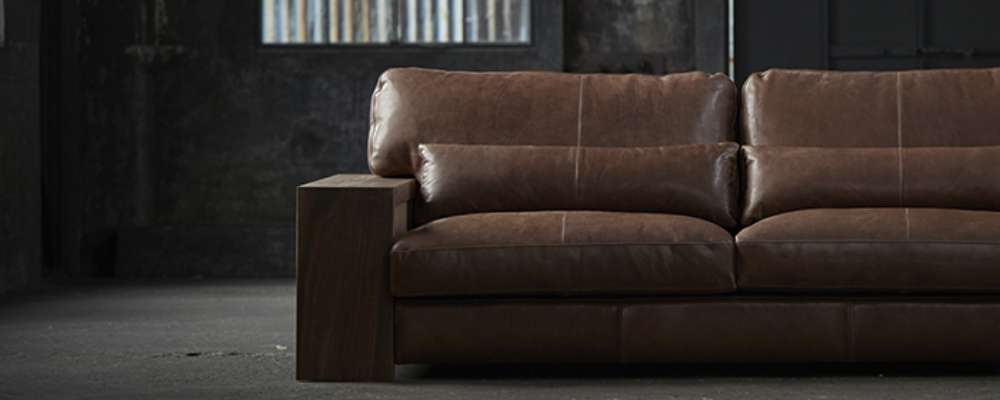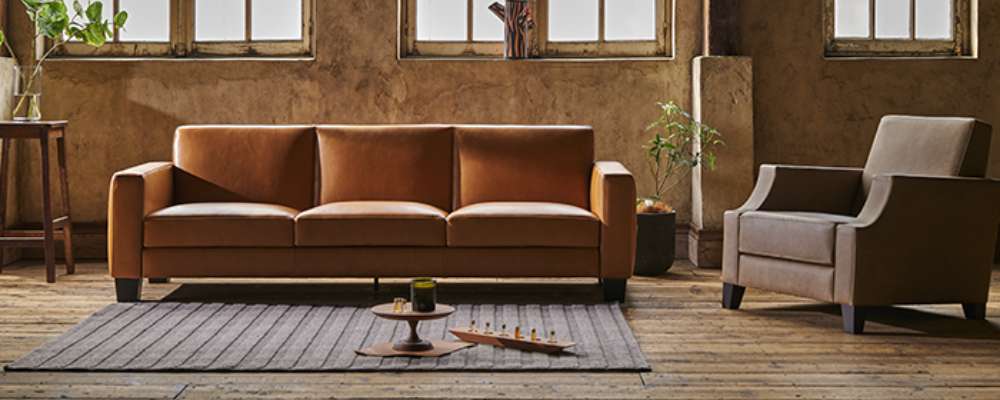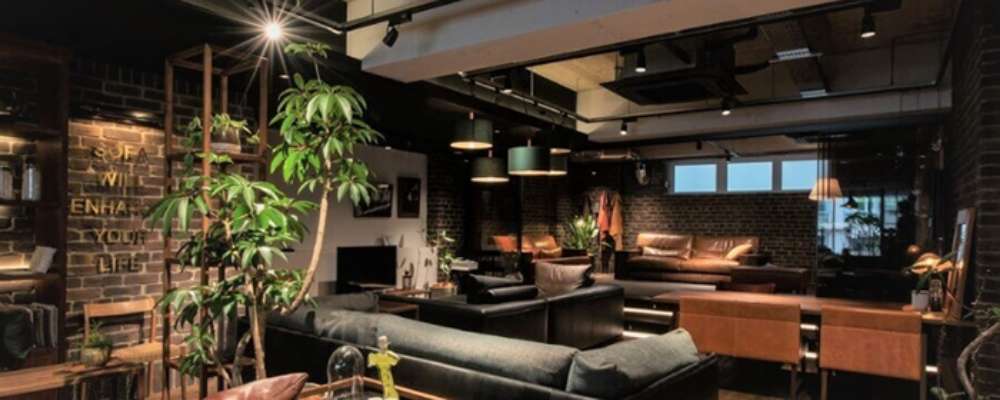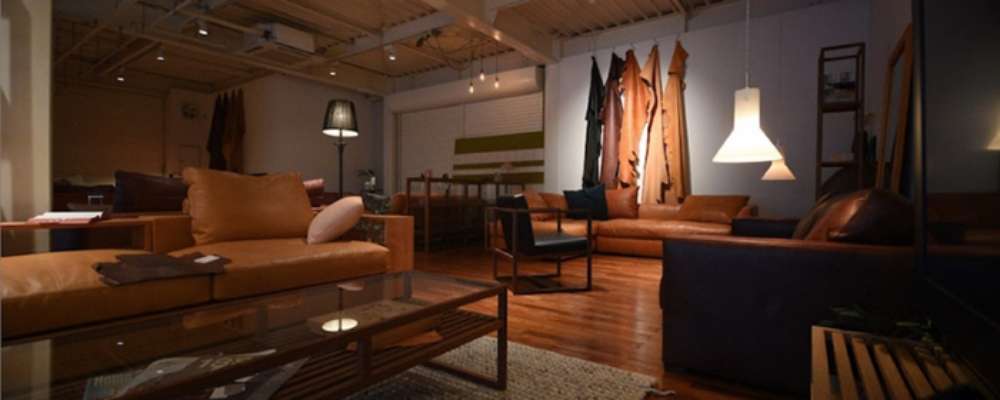LEATHER
LEATHER
Kokoroishi's Leather
Leather has been used since ancient times due to how it fits humans. It is both soft but durable; sleek while providing gentle support to the user. KOKOROISHI chooses leather that can naturally age gracefully along with and accompany its user through various stages of life.
DYED LEATHERS
(Aniline Leather)
Or otherwise known as "aniline leather". The leather is dyed after tanning, without adding a painted layer. Just like natural-finish leather, alanine leather retains the original texture and maturing process of the base leather. However, care needs to be taken to avoid the dyes staining clothes or the colors fading.
* For KW Rank Leather, Kokoroishi uses heat to stabilize dyes and then applies a layer of wax to its surface to prevent the dyes from staining.
NATURAL FINISH
Pure leather that, after tanning, does not have any dyes nor other layers applied. Users can touch the leather directly, and therefore most enjoy leather's natural texture and natural aging process with this type.
Do take care with this leather type as the natural richness of this kind of leather does mean that the leather is prone to stains and blemishes. With proper care, you should be able to mature the leather to a rich amber color.
SEMI-ANALINE LEATHER
Leathers which, while retaining its original look, have a thin protective layer against stains and fading added. The thinness of the protective layer makes it practically transparent, leaving the leather's natural appearance while heavily reducing necessary maintenance.
You can use this leather without paying attention to color loss or stains, but this comes at the cost of leather's natural texture and its natural aging process.
PAINTED LEATHERS
Leather coated in a layer of dye. This layer protects the leather from stains and fading and is very low-maintenance. The dyes themselves are also bright and resistant to UV fading and thus painted leathers are available in many vivid colors.
Maintenance is easy - wiping with a dry cloth will suffice. Stains from hand dirt etc. can usually be removed with by wiping with a well-squeezed cloth after dipping it in hot water.
COMPARISON
| TRAITS | MATURING PROCESS | ||||||
| Scars | Inconsistent Coloring | Maintenance | Fading | Discoloration | Scratch Marks | ||
| DYED (Analine) LEATHER | Vono | 3 | 3 | Needed | 3 | 3 | 3 |
|---|---|---|---|---|---|---|---|
| WL/WT | 4 | 4 | Needed | 3 | 4 | 4 | |
| KW | 5 | 5 | Needed | 4 | 4 | 5 | |
| NATURAL FINISH | Nume Leather | 5 | 3 | Needed | 4 | 4 | 5 |
| SEMI-ANALINE LEATHER | KZ | 4 | 3 | Not needed | 2 | 1 | 1 |
| MO | 4 | 1 | Not needed | 1 | 1 | 1 | |
| PAINTED LEATHERS | MS | 4 | 1 | Not needed | 1 | 1 | 1 |
* 1: None, 2: Mostly absent. 3: Average. 4: Somewhat present. 5: Present.
COMPARING AGING PROCESSES
ANILINE LEATHERS / NATURAL FINISH
Aniline leather - or leather that is dyed but not painted. The finish is closer to the original hide and thus retains its original scars and discoloring. However, this allows users to enjoy both its texture and how it changes.
-
Discolorations (blotches and black dots)
From spilt drinks and dirt from bare skin / hands.
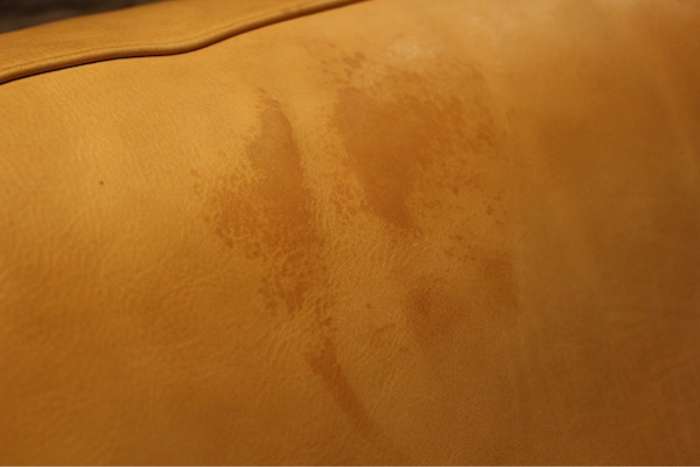
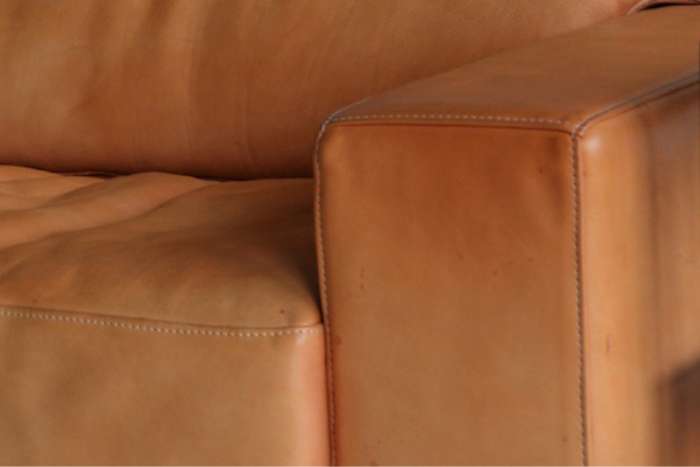
-
Ageing
Because there is no paint, scratches from nails or animal claws may damage the leather. These leave white marks but they will fade with continued use.
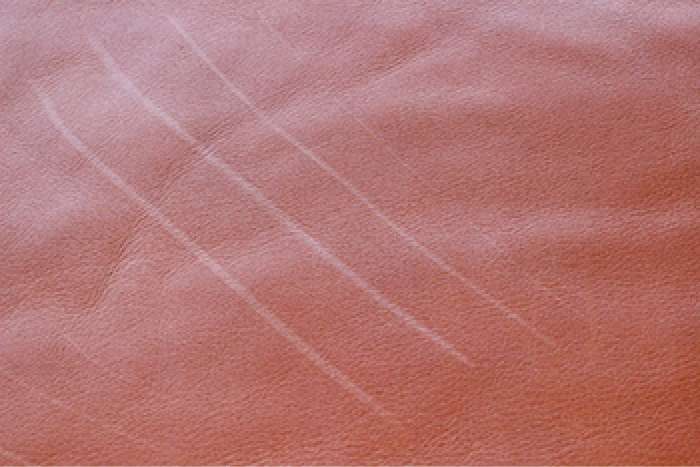
-
Maintenance
The fading of the dye which occurs as UV radiation affects the material. Placing sofas away from windows prevents this.
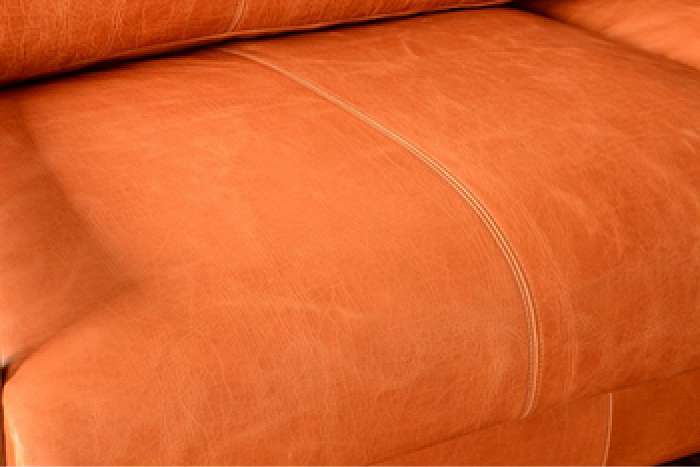
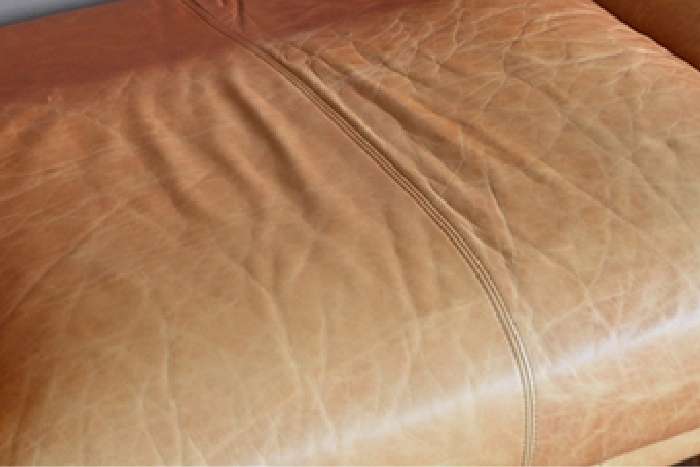
-
Color bleed
The colors of the dyes may transfer to clothes if the leather is wet.
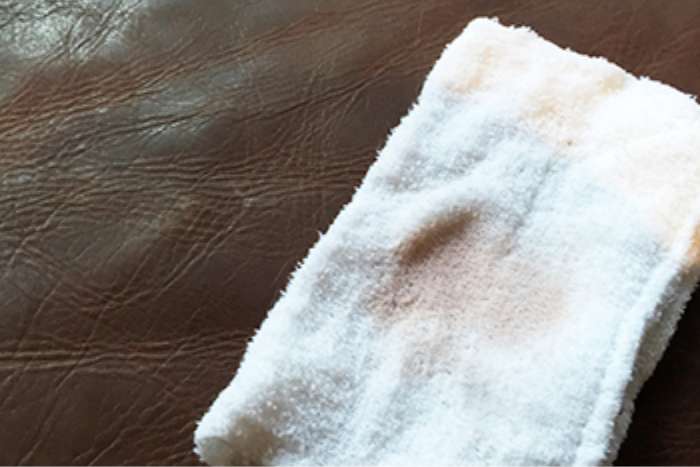
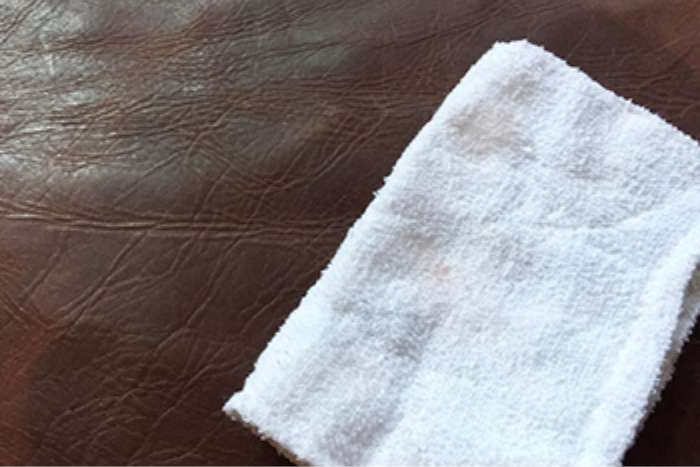
-
Inconsistent Coloring
Like human skin, cow hides have differences between different lots and even different parts of the same piece. Therefore the effect of dyeing may be slightly uneven.
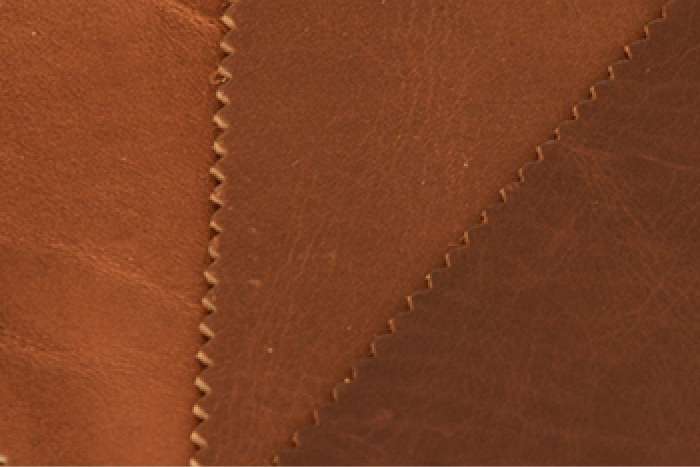
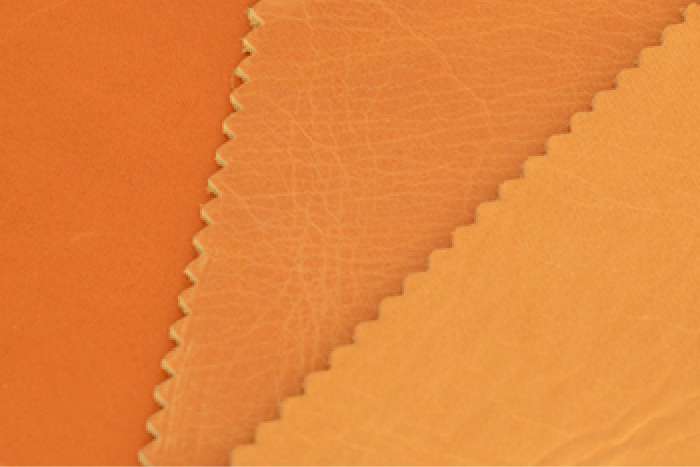
-
Maintenance
Please apply maintenance oil to the leather once every half a year to a year. The natural oil of the leather dissipates with time, which makes the leather more prone to damage. Oiling the leather makes it last far longer.
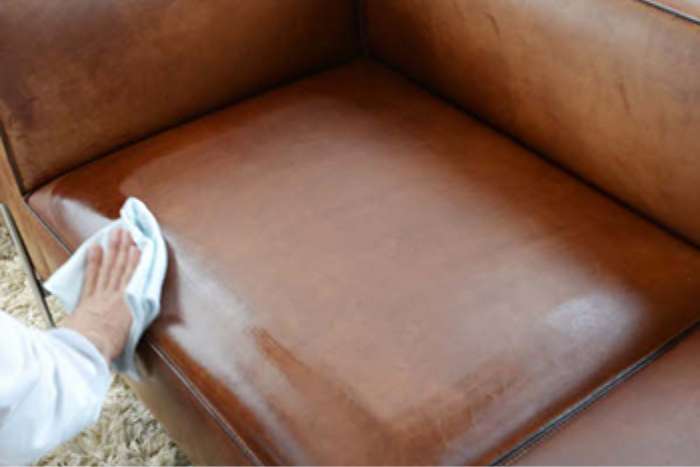
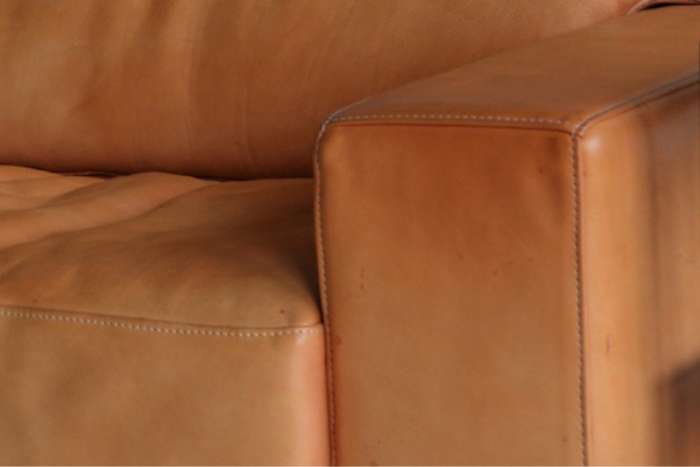
PAINTED LEATHERS
Leather with an painted exterior layer. While it varies with the layer's thickness, they generally require less maintenance and are less prone to damage and fading. However, they lose some of the look and texture of the original leather.
-
Discolorations (blotches and black dots)
Stains from hand dirt etc. can be removed with a damp (but not wet) towel. Stubborn stains can be removed with pH-neutral soap.
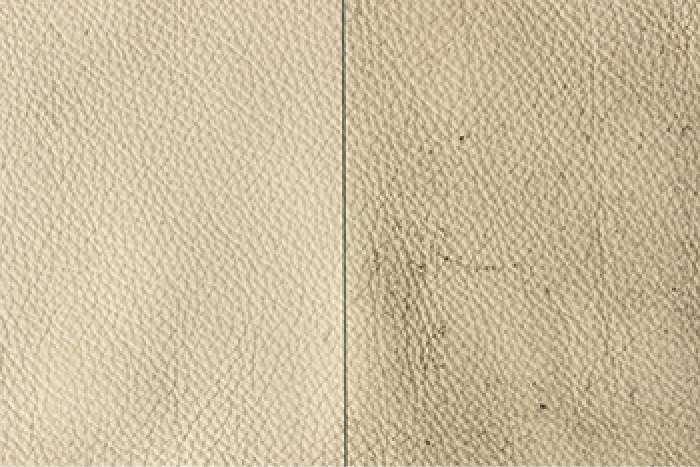
-
Ageing
The exterior urethane paint will deteriorate with long use and may exhibit cracks - indicating that it is probably time to replace the exterior.
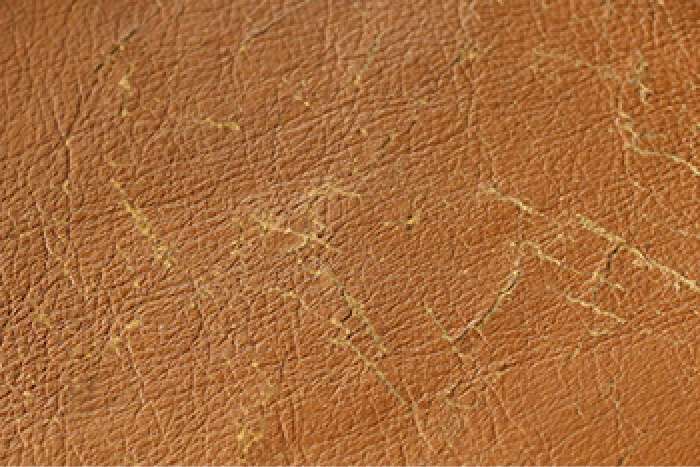
-
Maintenance
Wiping with a dry cloth is sufficient.
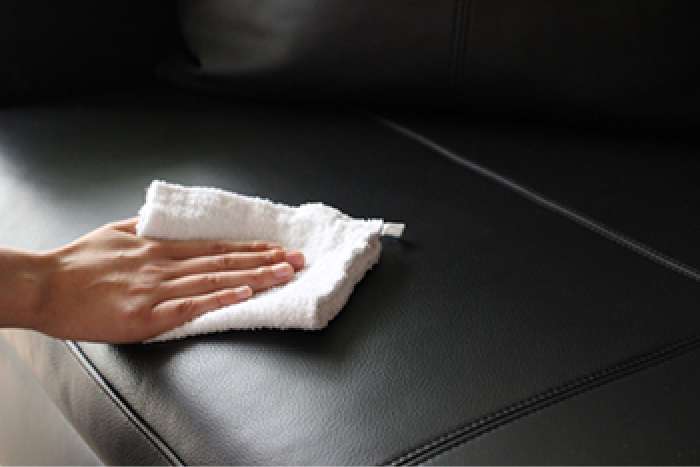
NATURAL MARKS
Full Grain Leather refers to leather which still fully retains its outmost layer (the grain). This grain is the strongest part of leather and full grain leather is therefore superior in durability. It also retains the natural flaws - scars, blotches of the original hide - and thus the original "flavor" of the leather. We inspect full grain leather for any possible issues with its durability, and use it if none are found.
-
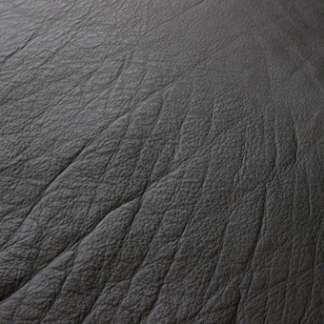
Wrinkles
Wrinkles formed when alive, especially around the belly and joints. Shape depends on the part of the animal.
-
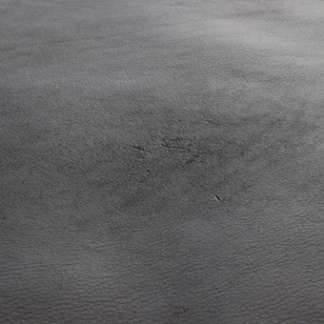
Roughness
Patches of roughness on the surface of the leather. Caused by skin damage when alive.
-
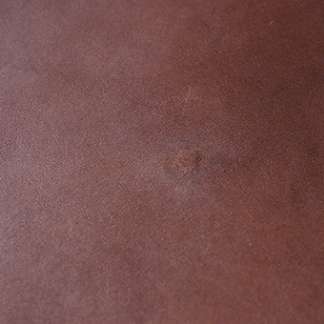
Cuts & Scars
Scars borne while alive. Scarred areas may feel slightly firmer to the touch.
-
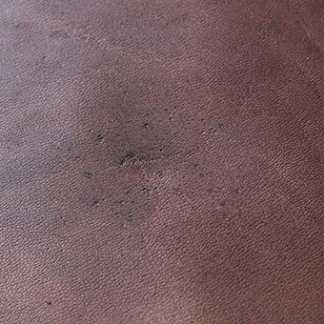
Small Holes
Scars formed by insects or bacterial growth while alive.
-
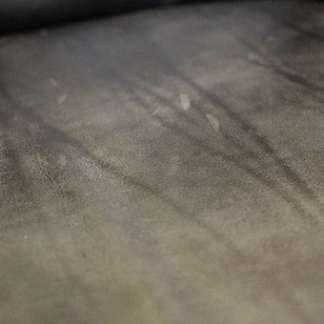
Blood vessels
Traces of blood vessels. May not be obvious at first but may become apparent as the leather's color fades.
TRAITS OF "GOOD LEATHER"
The definition of "good leather" varies depending on the person. We provide a variety of leathers to fit all definitions.
Generally speaking, leathers can be divided into two varieties - leathers which bring out the original richness of the leather and easy-to-use leathers.
-
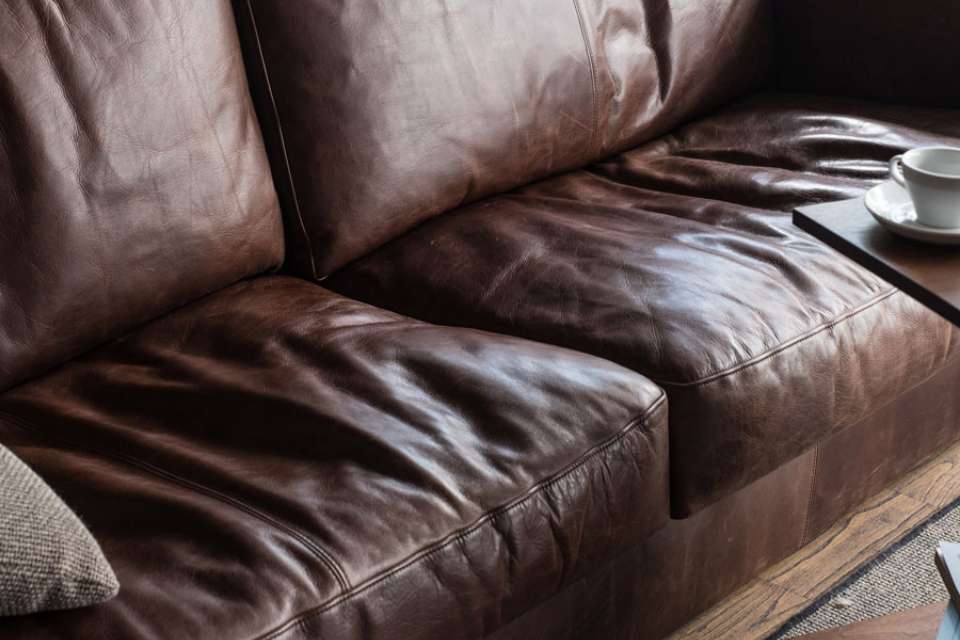
Lightly Processed Leathers - employing leather's natural strengths
-
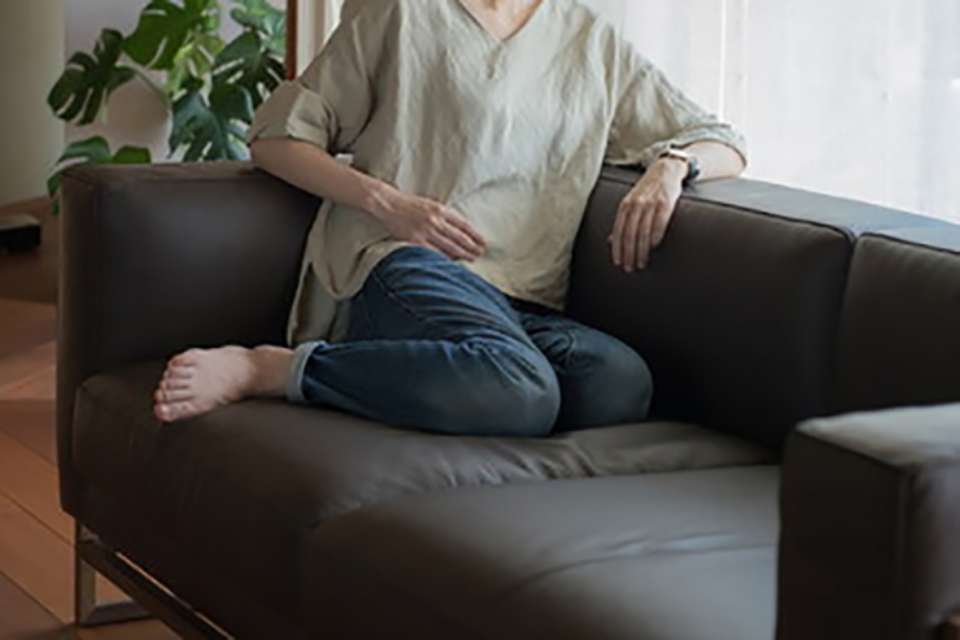
More Processed Leathers - for maximum usability

SPECIALTIES PER LEATHER TYPE
NATURAL FINISH
- Tanned leather that is neither dyed nor painted.
- A leather whose texture you can directly touch,
- and the variety which best displays the richness of leather's aging.
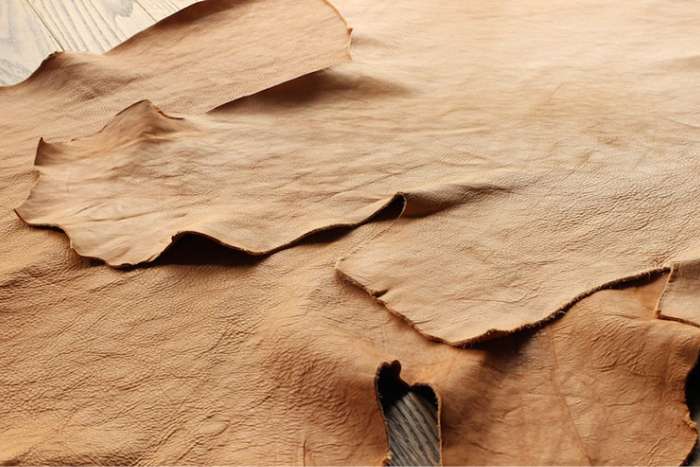
- NUME
Leather can be tanned in two ways - through the application of tannin or through applying chrome.
This method tans and strengthens leather with plant-derived tannin (like from tea). After tanning, the leather may appear off-white, but hte color will darken as the tannin oxidizes.
Chrome tanning makes leather both flexible and strong - which explains why it is used far more commonly in sofas right now. However, this adds a blue-gray tinge to the leather, which is why it is not suited to sofas aiming for a natural leather look.
This form of leather allows the user to enjoy the most of leather's original richness but requires care to prevent stains and damage and to mature it into a rich amber hue.
DYED (Analine) LEATHER
- Generally referred to as "Analine Leather".
- Dyed after tanning, without a paint layer.
- Retains leather's natural texture and aging, but color may fade or stain other objects.
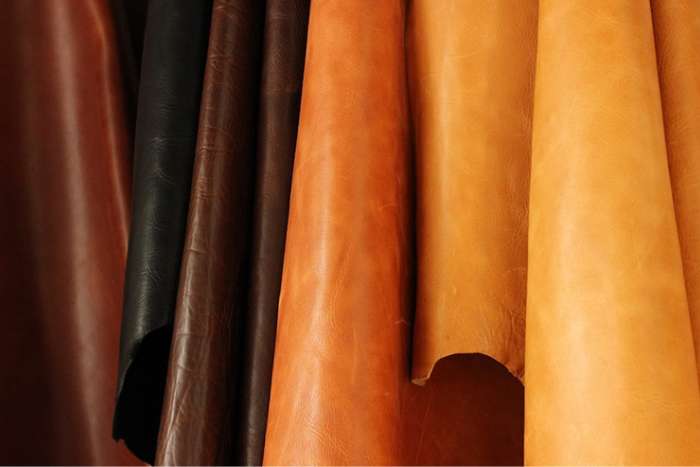
- VONO
- WL/WT
- KW
Color staining from leather occurs when the dyes in a leather interact with sweat or water and transfer to other materials. We add a layer of wax to our leathers to prevent this as much as possible, but please be aware that it is impossible to fully prevent color transfer.
In addition, exposure to UV light may cause the colors to fade. Therefore we recommend placing sofas further in the room and away from bright windows.
Leather products require regular maintenance - the application of oil can prevent roughness and protect the leather. This is important as insufficient maintenance can cause fizzures and tears in the leather.
SEMI-ANALINE LEATHER
- Leather with a thin paint layer which still retains its natural look.
- Easy maintenance due to the paint protecting the leather
- from its color fading and stains.
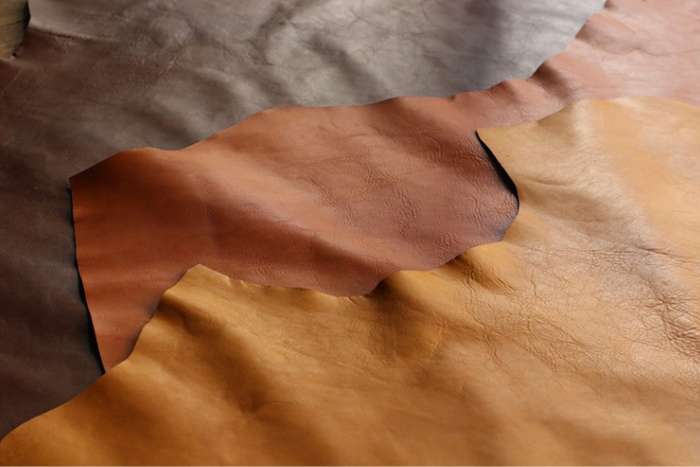
- KZ
- MO
Leathers which, while retaining its original look, have a thin protective layer which protects them from stains and fading. The thinness of the protective layer makes it practically transparent, leaving the leather's natural appearance while heavily reducing necessary maintenance.
Though easy to use as it is resistant to stains and fading, semi-aniline leather loses the signature texture and maturing process of the original leather. The thinness of the exterior layer also means that it is not as resistant as the other leathers below.
PAINTED LEATHERS
- Color coated with a layer of paint.
- Easy maintenance - strong against stains and colors fading.
- Available in a variety of vibrant colors.
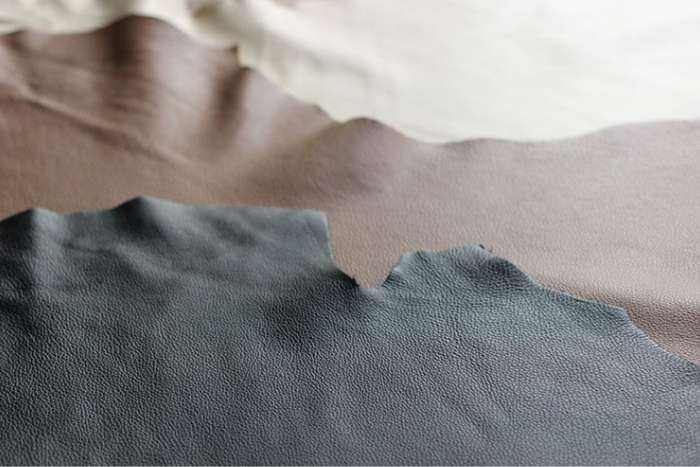
- MS
Leather coated in a layer of paint. This leather is resistant against stains and colors fading, which means it can be made in a variety of vivid colors. In addition, the application of paint allows for the use of cheaper leathers - leading to overall cost-effectiveness.
However, this leather does not mature with age. With continued use, the paint layer will start to accumulate damage and we expect there to be cracks appearing at the 10-15 year mark.
Maintenance is generally not required for this type of leather - dirt can be wiped off with a towel. However, damage to the paint layer will require re-painting.




